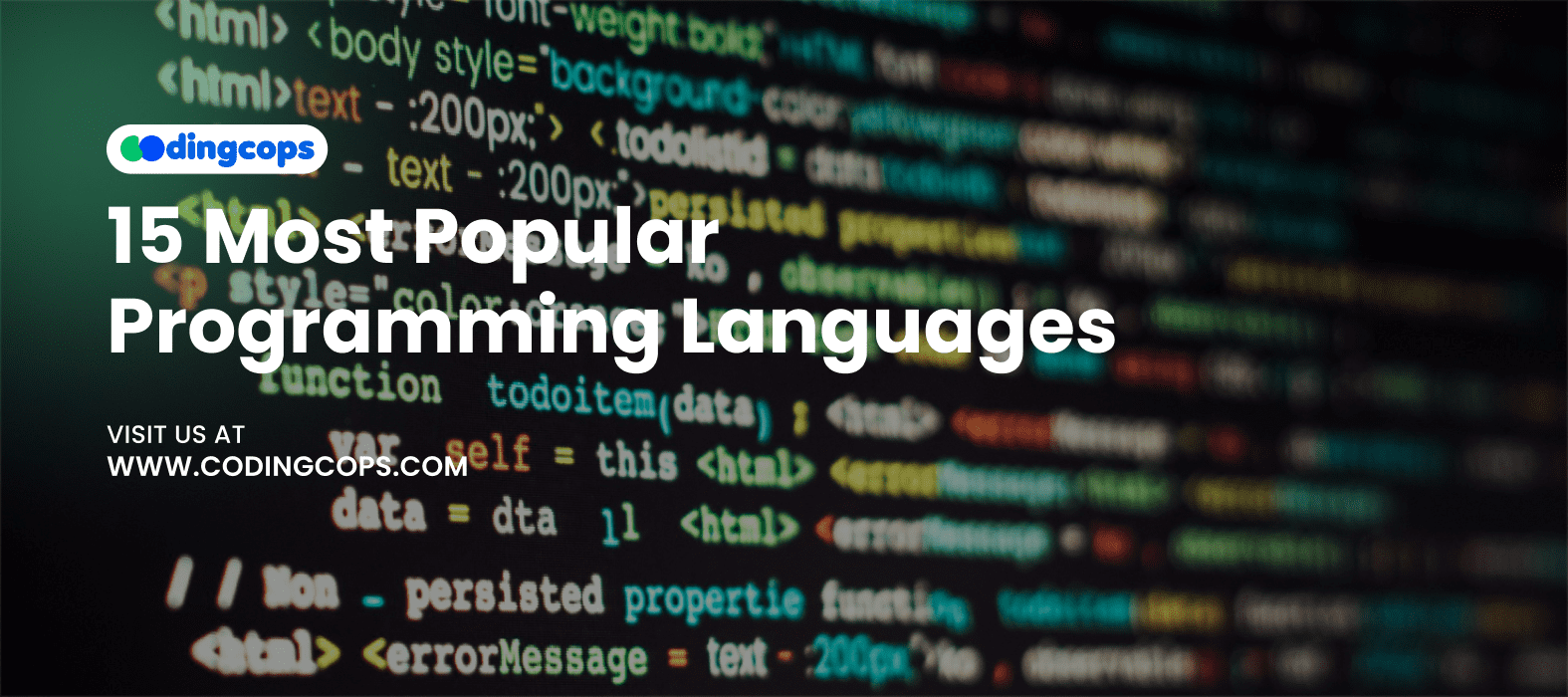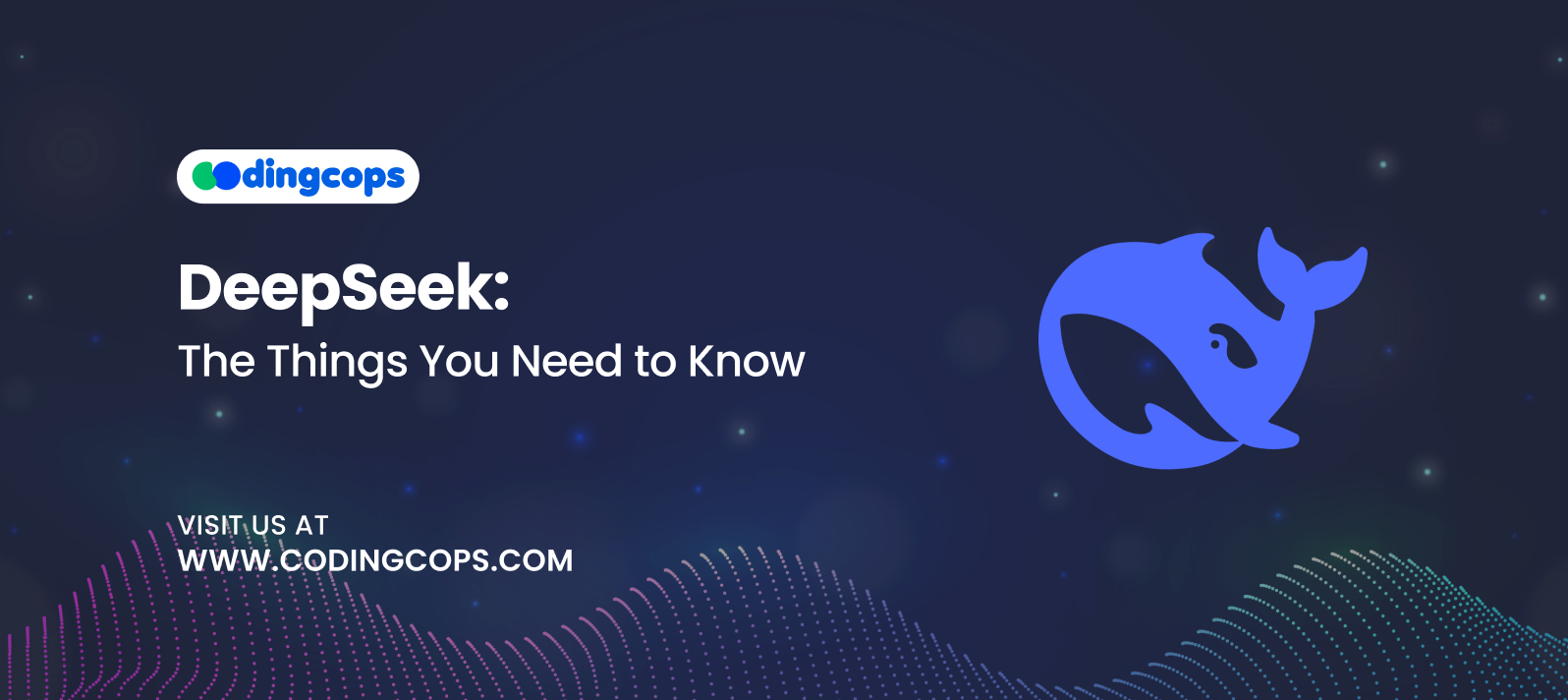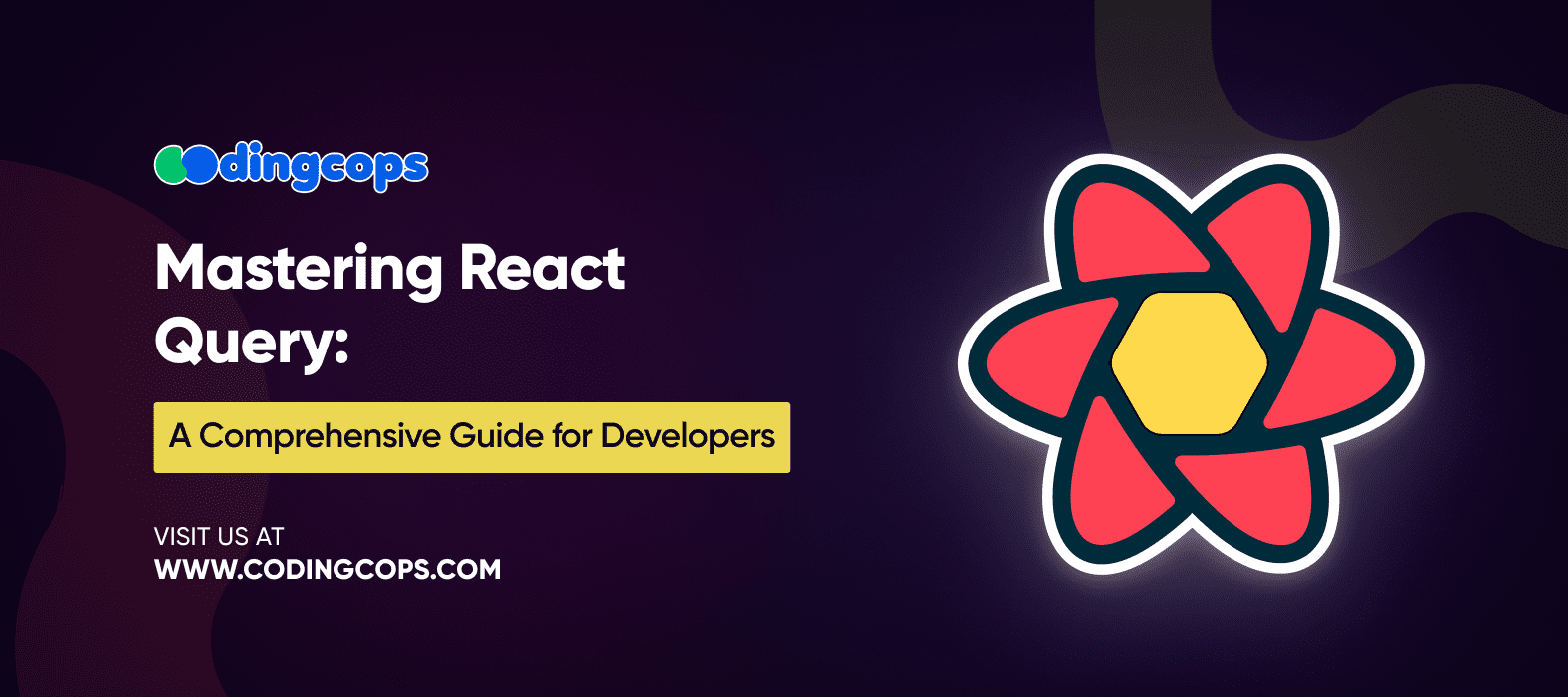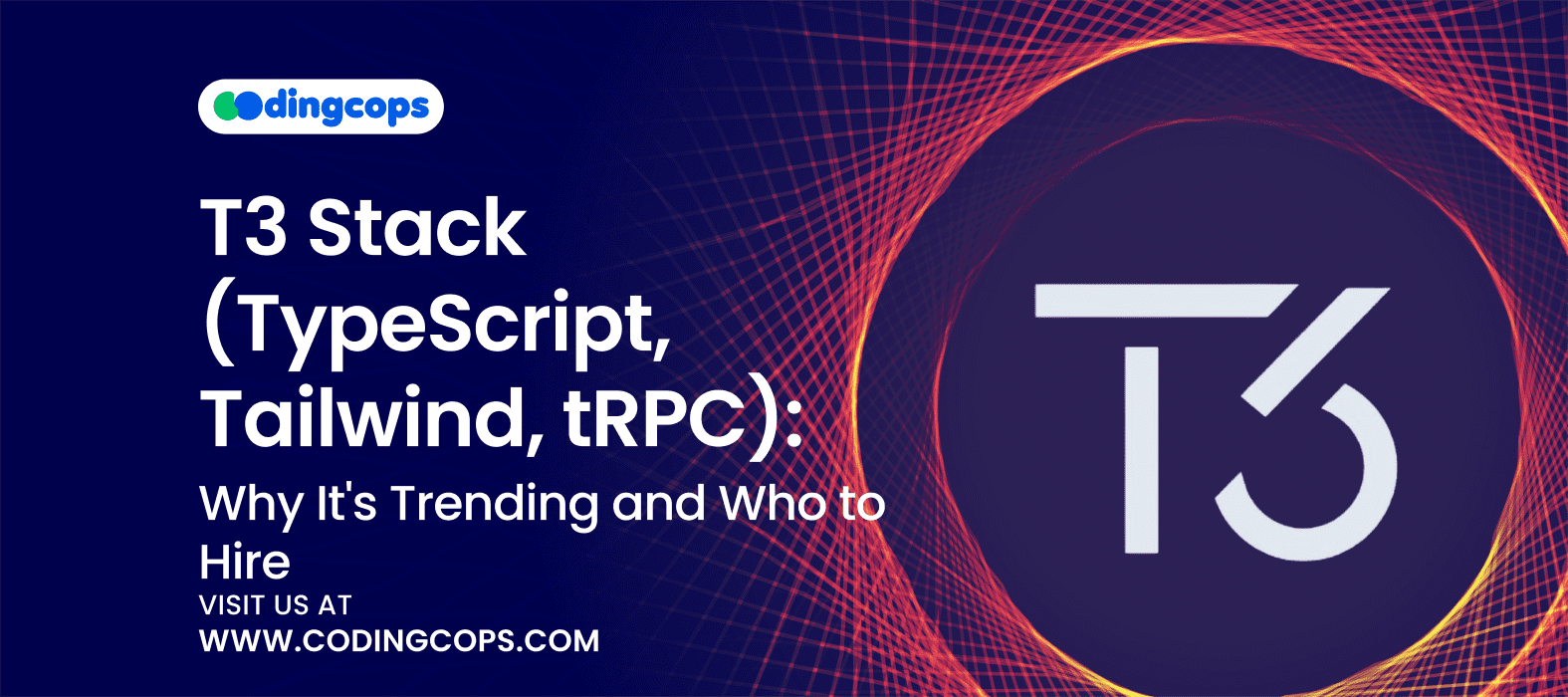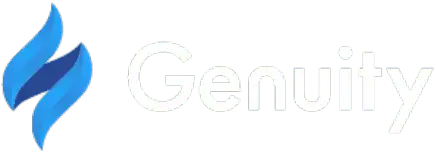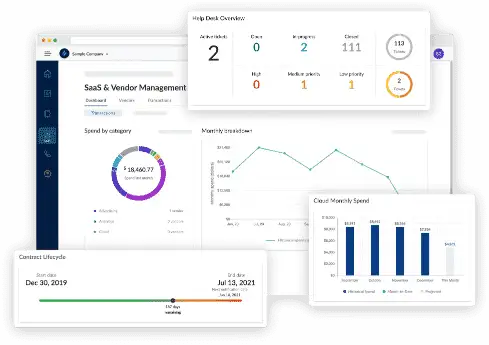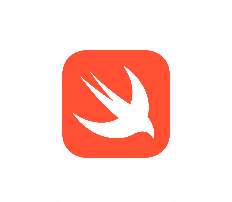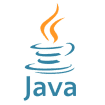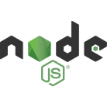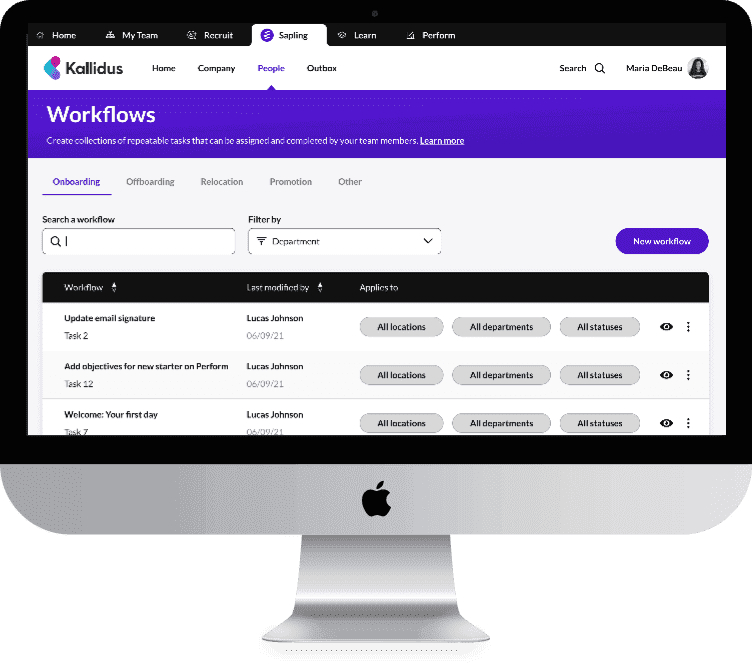Do you know that there are over 8000 programming languages in the world? I was also surprised when I came across this fact because I have come across only a handful of them.
But in the context of modern programming, this question can be tricky to answer. Because only about 50 to 100 programming languages are in use. Moreover, new programming languages enter the fray now and then. Hence, making older programming languages obsolete.
Hence, with so many options available, it’s not a surprise that the question might have crossed your mind as well: what are the best programming languages? The answer to this question isn’t straightforward. Because there are several programming languages and they serve different purposes.
If you are a manager or an executive looking to learn about the different types of programming languages your team has to work with, or a developer or engineer looking for new programming languages to learn, we can help you.
In this piece, I, and experts at CodingCops will discuss 15 popular programming languages that you can look into.
What is A Programming Language?
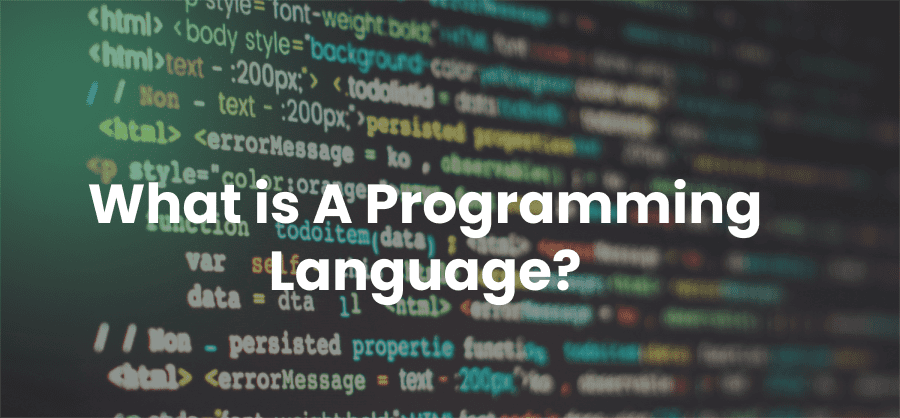
Programming languages or computer programming languages are sets of instructions written in a specific syntax. These sets of instructions tell your computer what tasks to perform and how to perform them. Moreover, computers only understand binary language. Hence, programming languages bridge the gap between our language and the binary language of computers.
So, by gaining expertise in a programming language, you can create websites, applications, and other digital assets that have become necessary in the modern world.
Major Types of Programming Languages
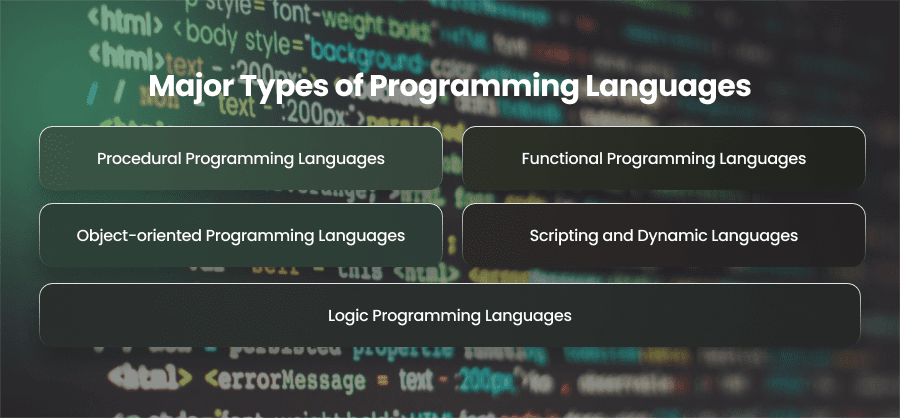
There are multiple types of programming languages with each having its strengths and limitations. Here are some of them:
- Procedural Programming Languages
This type of programming language breaks down each problem into step-by-step procedures. For example, C, Cobol, and Pascal are procedural languages.
- Functional Programming Languages
Functional programming languages manipulate data structures without modifying existing data. Hence, they provide a more predictable outcome. Scala is a well-known example of a functional programming language.
- Object-oriented Programming Languages
In an object-oriented programming language, the program is organized around an object that contains data (properties) and actions (method). Python, Java, and C++ are some prominent examples of object-oriented programming languages.
- Scripting and Dynamic Languages
These languages are lightweight and can automate tasks or add interactivity to web pages. For example, JavaScript and Ruby are prime examples of this type of programming language.
- Logic Programming Languages
These programming languages solve problems with logic and reasoning. Additionally, these languages uniquely approach problems. Moreover, AI applications use these languages. Prolog is a notable example of this type of programming language.
15 Best Programming Languages
1. JavaScript
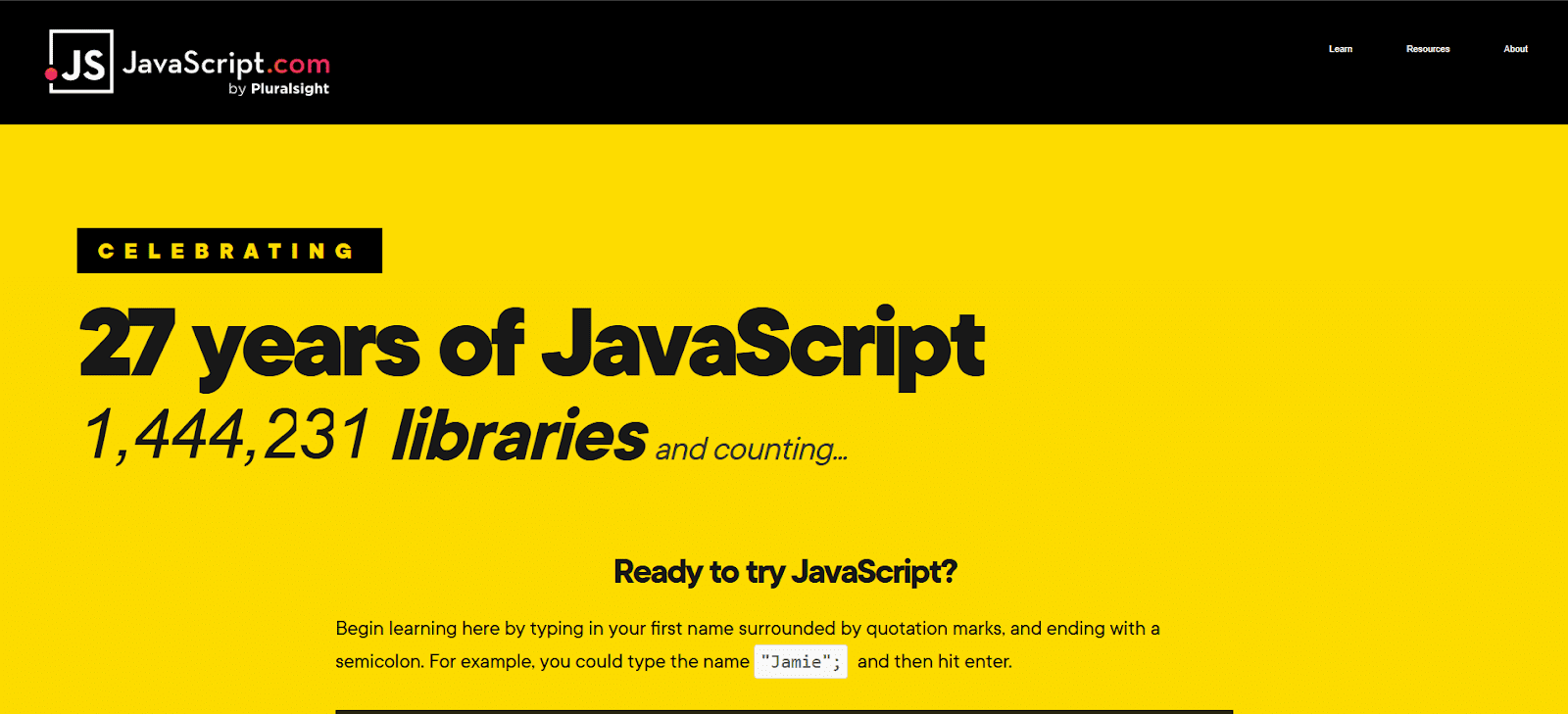
The demand for dynamic web applications is through the roof. Therefore, it’s almost impossible to become a software developer without learning JavaScript. Moreover, According to a survey by Stackoverflow, JavaScript has bagged the top spot in the popularity category for the eleventh year in a row with 62% of respondents saying they use JavaScript.
Furthermore, the majority of popular websites like Facebook, Gmail, YouTube, and X use JavaScript. They rely on it to build interactive web pages and dynamically display content to users.
Also, if you are a beginner, you need to have a basic understanding of HTML and CSS for learning JavaScript. Alongside this, you need to have strong problem-solving, logical thinking, and procedural reasoning skills.
JavaScript’s key features include:
- JavaScript can be used for both frontend and backend development.
- It can add dynamic elements to web pages, making them more engaging and responsive.
- JavaScript has a large and flourishing community. Hence, you can find extensive online resources, tutorials, and frameworks to learn it.
| Pros | Cons |
| Easier to learn with clear syntax. | It is vulnerable to scripting attacks if not implemented securely. |
| High demand in the software industry. | Can be difficult to debug especially in complex applications. |
| Used across different technologies. | It’s difficult to write cross-browser code because of different interpretations. |
Moreover, the average basic salary of a JavaScript developer is $106, 583. That comes out to $51/ hour. But, this depends on factors such as experience and location.
2. Java
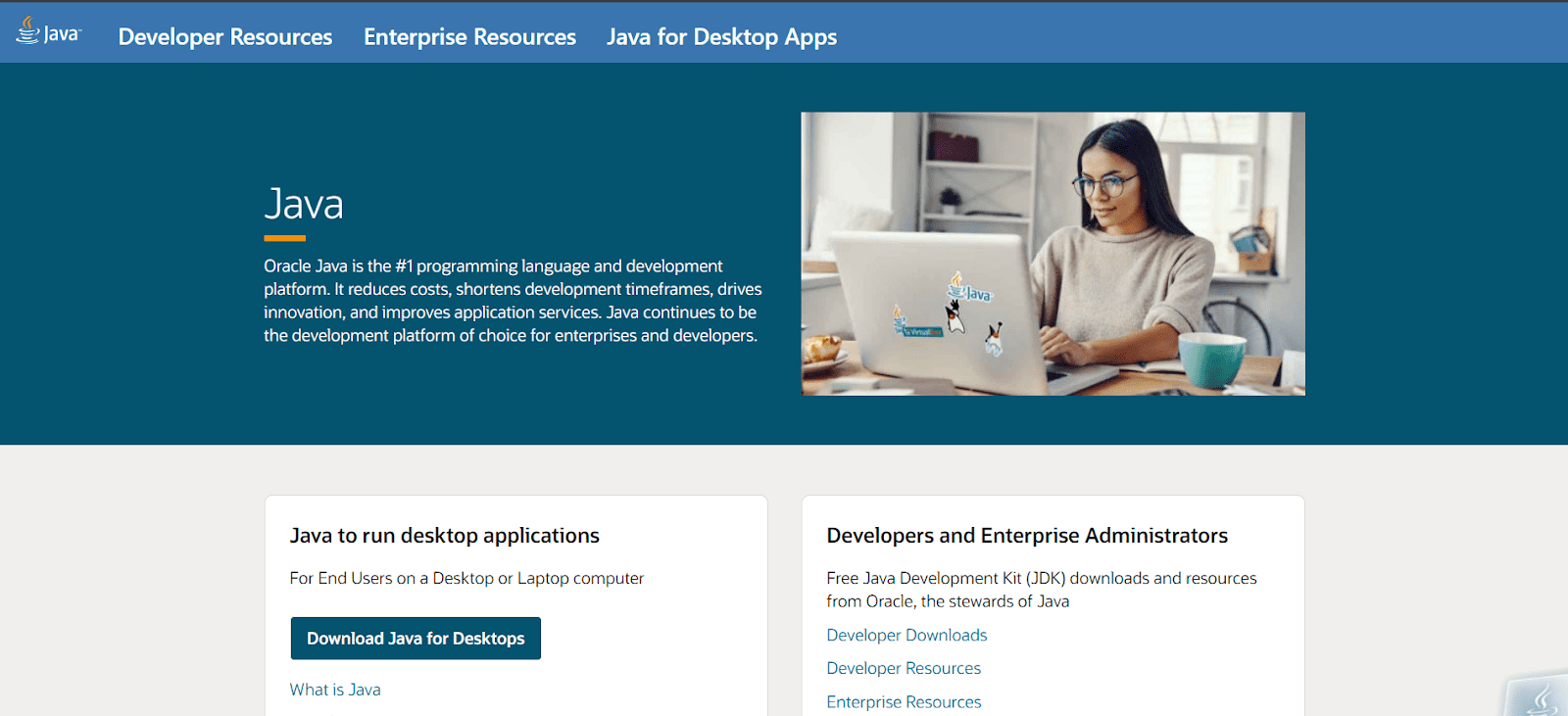
Java has now been around the software industry for three decades. Still, it’s a dominant force, especially in enterprise software development. It has a write-once, run-anywhere philosophy. Moreover, it has a mature ecosystem that makes it a reliable choice for building large-scale applications. Additionally, Java handles data exceptionally and provides security. Hence, it’s used in fintech and e-commerce applications.
Its features include:
- Java code can run on various platforms without any modification.
- Because of its OOP philosophy, Java code is reusable and easily maintainable.
- Java has a vast array of libraries and frameworks for diverse development needs.
| Pros | Cons |
| Java is a stable and mature programming language. | It is a wordy language compared to others. |
| It’s a versatile and widely used language. | It has a steep learning curve. |
| Access to a large community and resources. | Not suitable for small scripting tasks. |
Additionally, the average salary of a Java developer is $117,931/ year. That comes out to $57/ hour.
3. Python
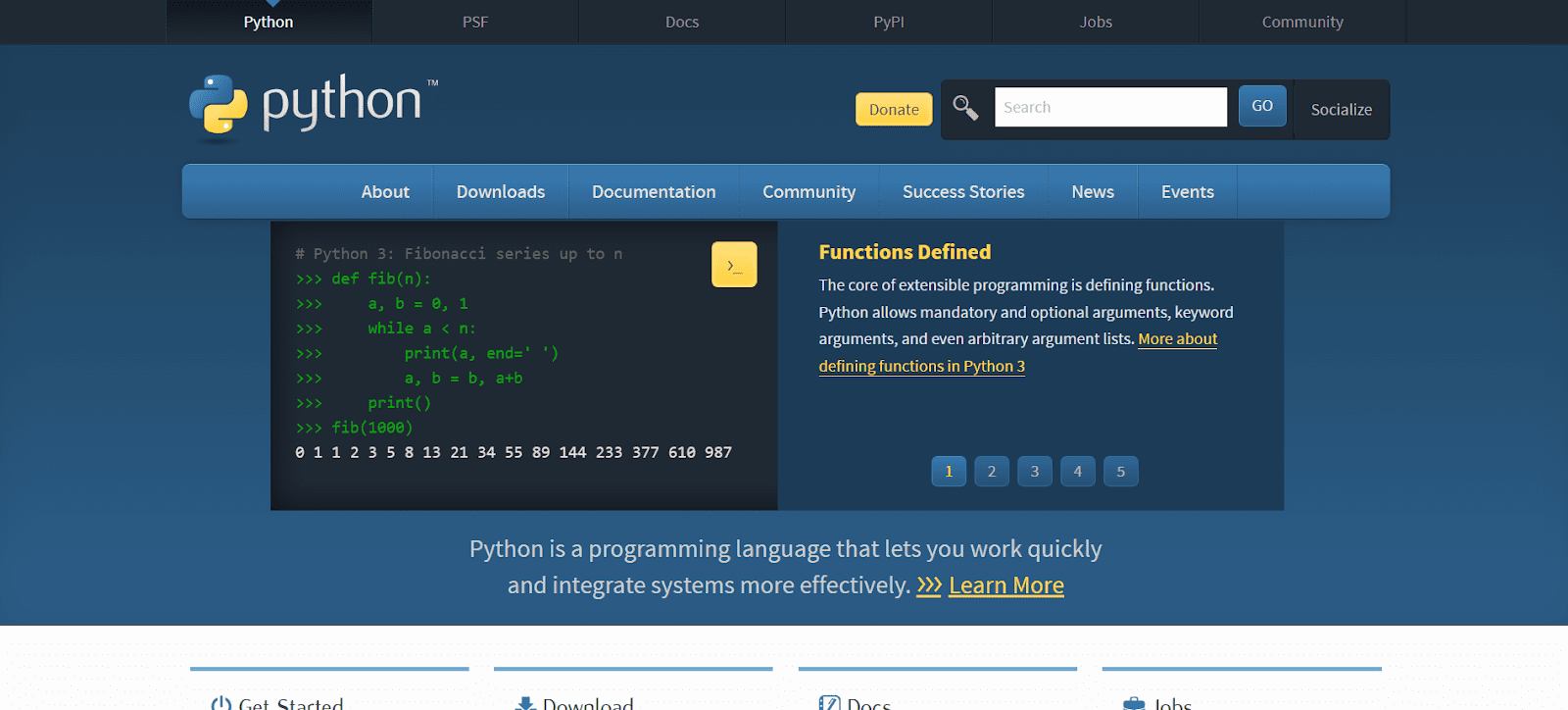
Python is another programming language that is popular with programmers. Moreover, it can be used with different types of programming styles like functional, object-oriented, and reflective. Beginners are especially interested in learning Python because it’s easy to learn and has extensive library resources.
Furthermore, many well-known apps are based on Python like Uber, Instagram, Spotify, and Dropbox.
Some of its features are:
- Python’s syntax is similar to natural language making it easier to learn.
- It’s widely used in data science and machine learning projects.
- Its vast array of libraries simplifies complex tasks and streamlines development.
| Pros | Cons |
| Its syntax is readable. | It’s slower compared to compiled languages. |
| Used in data analyses and machine learning. | It relies on proper indentation which can cause errors if not followed correctly. |
| A rich ecosystem of libraries. | Python is primarily used for backend development and has limited use in native mobile app development. |
Moreover, a Python developer can earn around $141,658 /year. That comes out to $68/hour.
4. SQL
SQL is another best programming language to learn alongside Python. Moreover, SQL enables the storage, extraction, and manipulation of data within an existing relational database.
Its features are:
- SQL is used extensively by database management systems.
- It’s based on what data to retrieve or manipulate, not the specific steps to achieve it.
- Furthermore, SQL enables querying and data management across interconnected tables within a database.
| Pros | Cons |
| SQL has a clear syntax for database interactions compared to complex programming languages. | Focuses only on data manipulation and not on complex programming tasks. |
| It applies to various database platforms. | It can have minor syntax variations between different database systems. |
| SQL is essential for data analysts and database administrators. | It’s primarily used for working with relational databases and not general programming. |
Furthermore, the average yearly salary of an SQL developer is $109,407. That comes out to $53/hour.
5. TypeScript
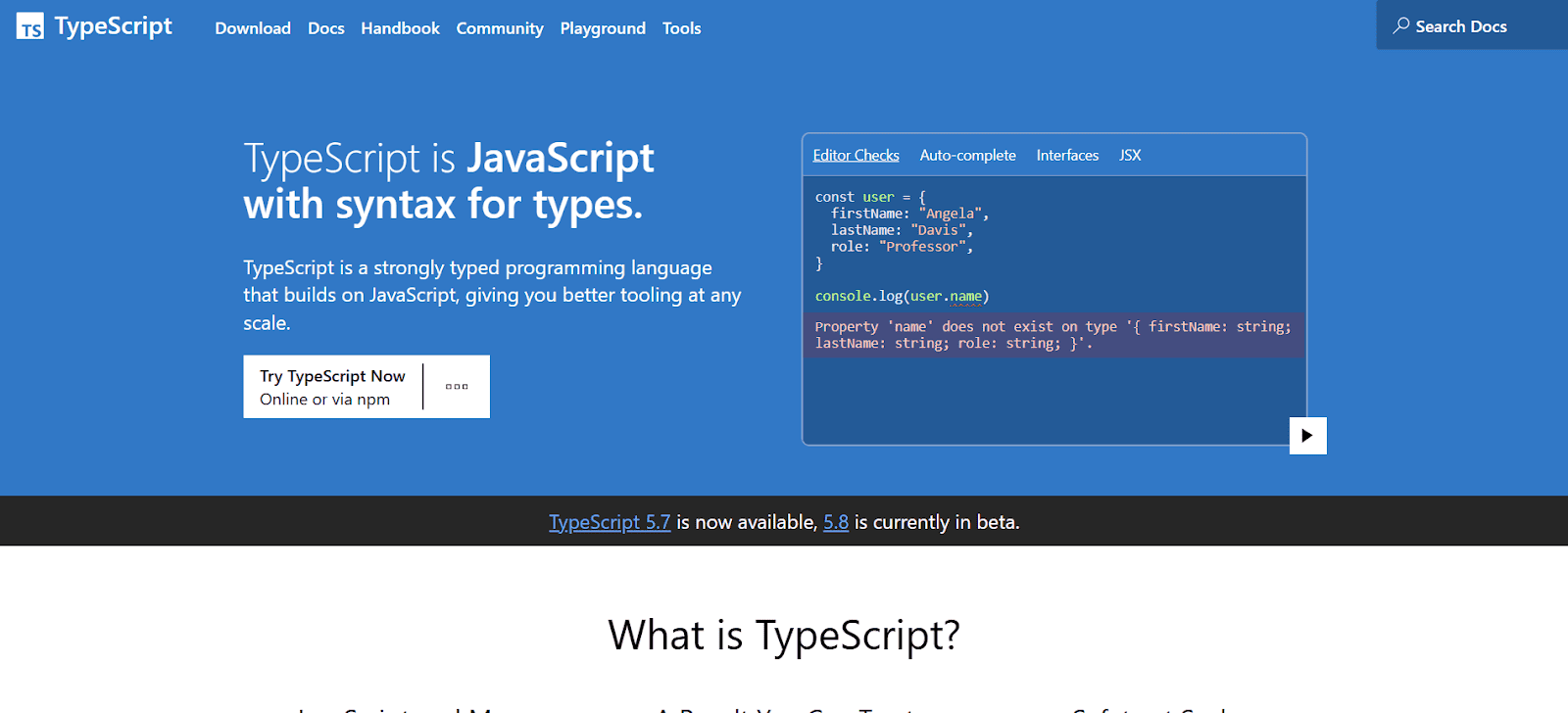
According to StackOverflow, close to 40% of developers use TypeScript. Moreover, if you have proficiency in JavaScript, TypeScript is easier to learn because it builds on JavaScript and works well in the same environments. Furthermore, companies like Slack, Google, and Airbnb use TypeScript.
Its features are:
- TypeScript synchronizes with JavaScript. Any code that is written in TypeScript gets compiled into regular JavaScript.
- It also has code completion and refactoring features to make development smoother.
| Pros | Cons |
| Improves JavaScript by adding features for better organization and error prevention. | Additional learning is required compared to JavaScript. |
| Utilizes JavaScript’s libraries and resources. | Compilation can add an overhead to the development workflow. |
| It’s gaining traction in the marketplace as large-scale web application development becomes complex. | Type intonation impacts readability by adding additional code. |
Furthermore, TypeScript developers earn about $129,348/year, about $62 an hour.
6. Go
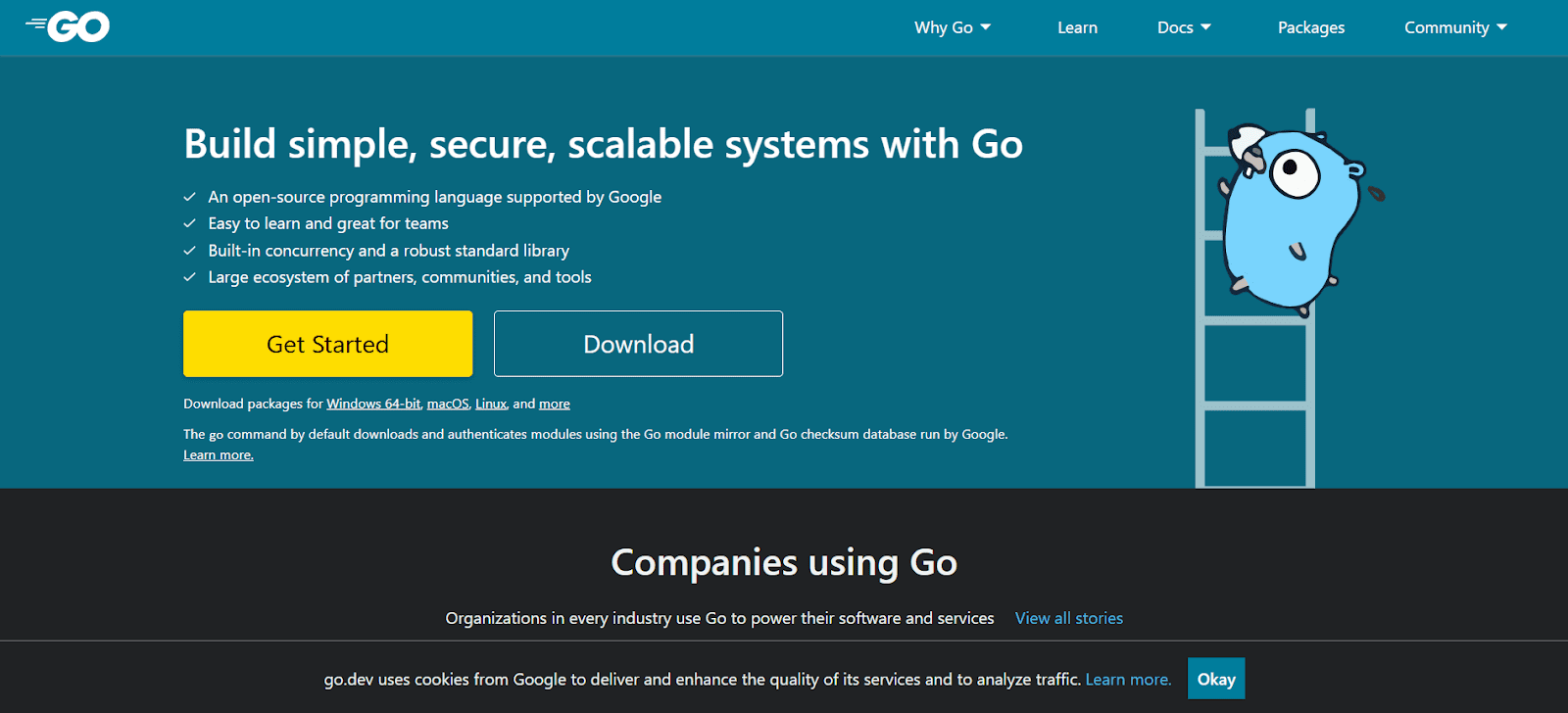
Golang, also known as Go, is a compiled language developed by Google engineers. It is known for its focus on simplicity, concurrency, and performance. Go is ideal for developers looking to break into systems programming. It has much of the same functionality as C and C++ but with a simpler syntax. Also, it is the best programming language for building web servers, data pipelines, and machine learning packages.
Its features include:
- Go has built-in support for concurrency that simplifies handling multiple tasks.
- Its clean and concise syntax makes it easy to understand and maintain.
- Automatic memory management reduces the complexity of development.
| Pros | Cons |
| Easier learning curve compared to other programming languages. | Go doesn’t have a mature ecosystem compared to others. |
| Excellent concurrency features. | Not ideal for all programming paradigms. |
| Efficient performance | It can have a steeper learning curve for complex projects. |
Additionally, the average annual salary of a Go developer is $120,086. That is about $58/hour.
7. Swift
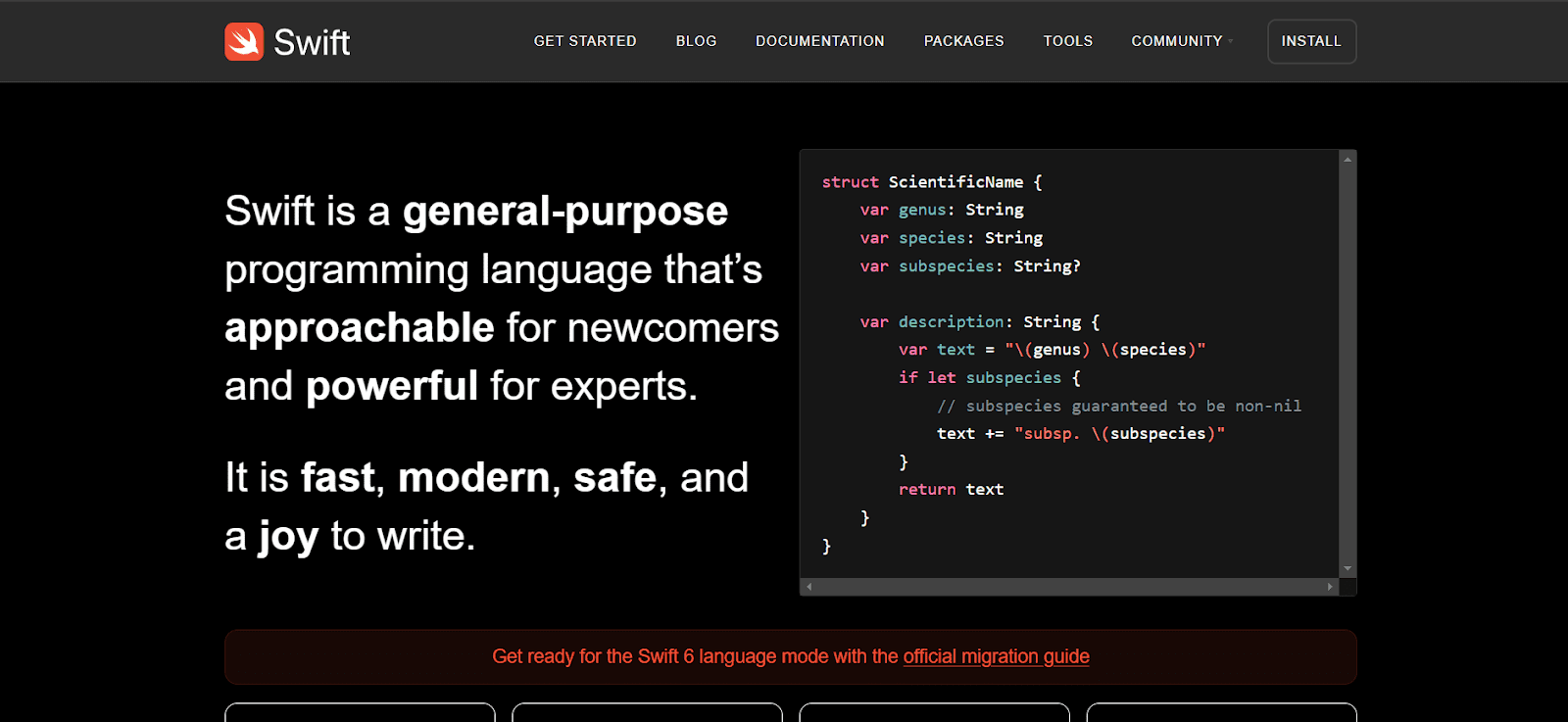
Swift is the primary programming language for building iOS, iPadOS, and macOS applications. It was developed by Apple more than a decade ago. Moreover, Swift is optimized for performance and built to match the requirements of modern applications.
Its features are:
- Swift has a safe, readable, and expressive syntax for efficient development.
- It integrates well with Apple’s development tools and frameworks.
- It reduces crashes and errors by emphasizing memory safety and type safety.
| Pros | Cons |
| It is safe and extremely readable. | Swift has limited use outside Apple’s platforms. |
| Expressive and powerful. | It has a smaller development community compared to others. |
| Highly efficient | Developers new to Apple’s ecosystem have to face a steep learning curve. |
Moreover, a Swift developer earns on average a yearly salary of $123,994. This comes out to $60/hour.
8. C#
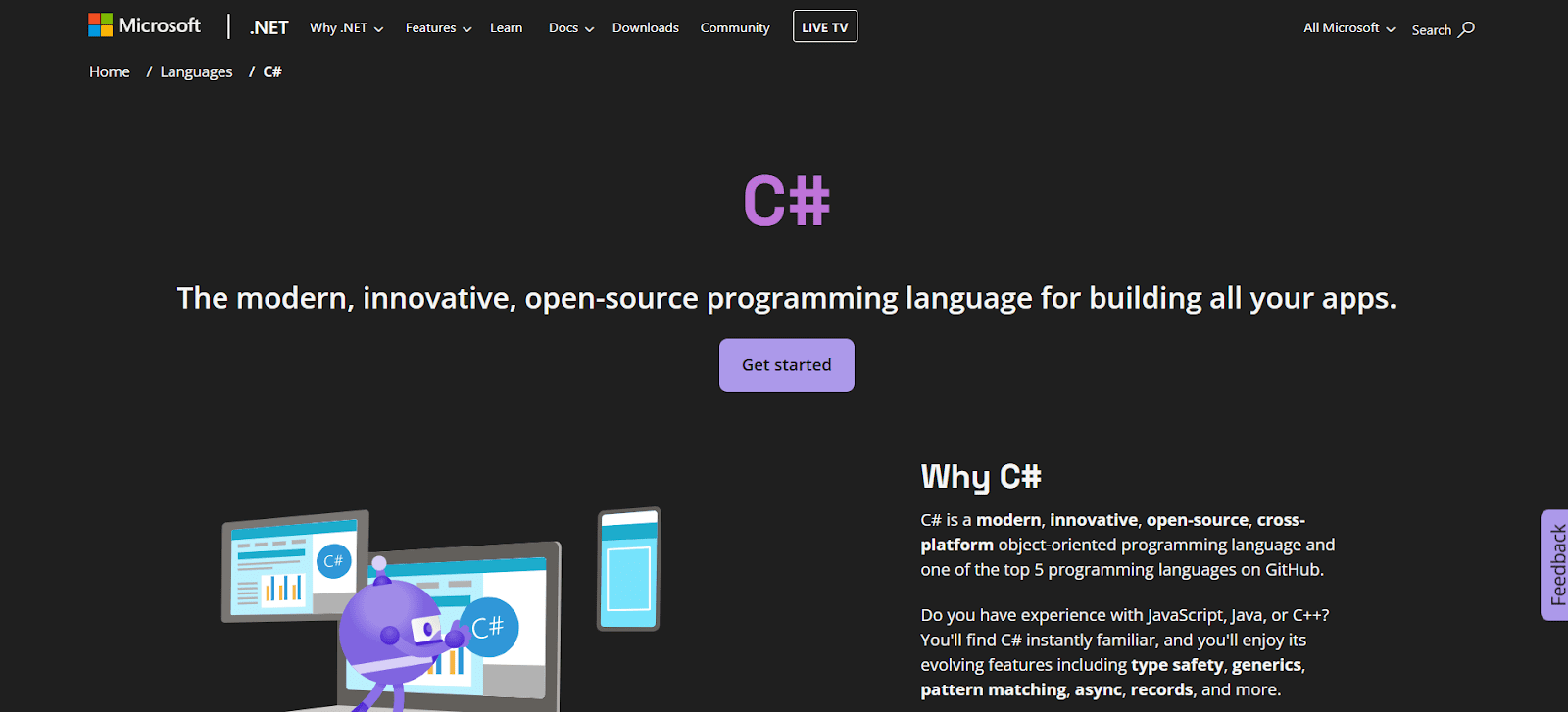
C# is an OOP language built on the foundations of C. Moreover, Microsoft developed it as a part of its .NET framework. Additionally, C# uses a syntax that’s similar to other C languages.
Some of the features of C# are:
- C# focuses on code organization and reusability through objects and classes.
- It integrates with the .NET framework.
- With .NET Core, C# runs on Windows, Linux, and macOS.
| Pros | Cons |
| It’s powerful and versatile. | C# has a steeper learning curve for beginners. |
| C# has a large community. | It’s primarily built for Microsoft environments. |
| Object-oriented focused | It is not ideal for all programming paradigms. |
The average yearly salary of a C# developer is $109,892. This comes out to $53/hour.
9. Kotlin
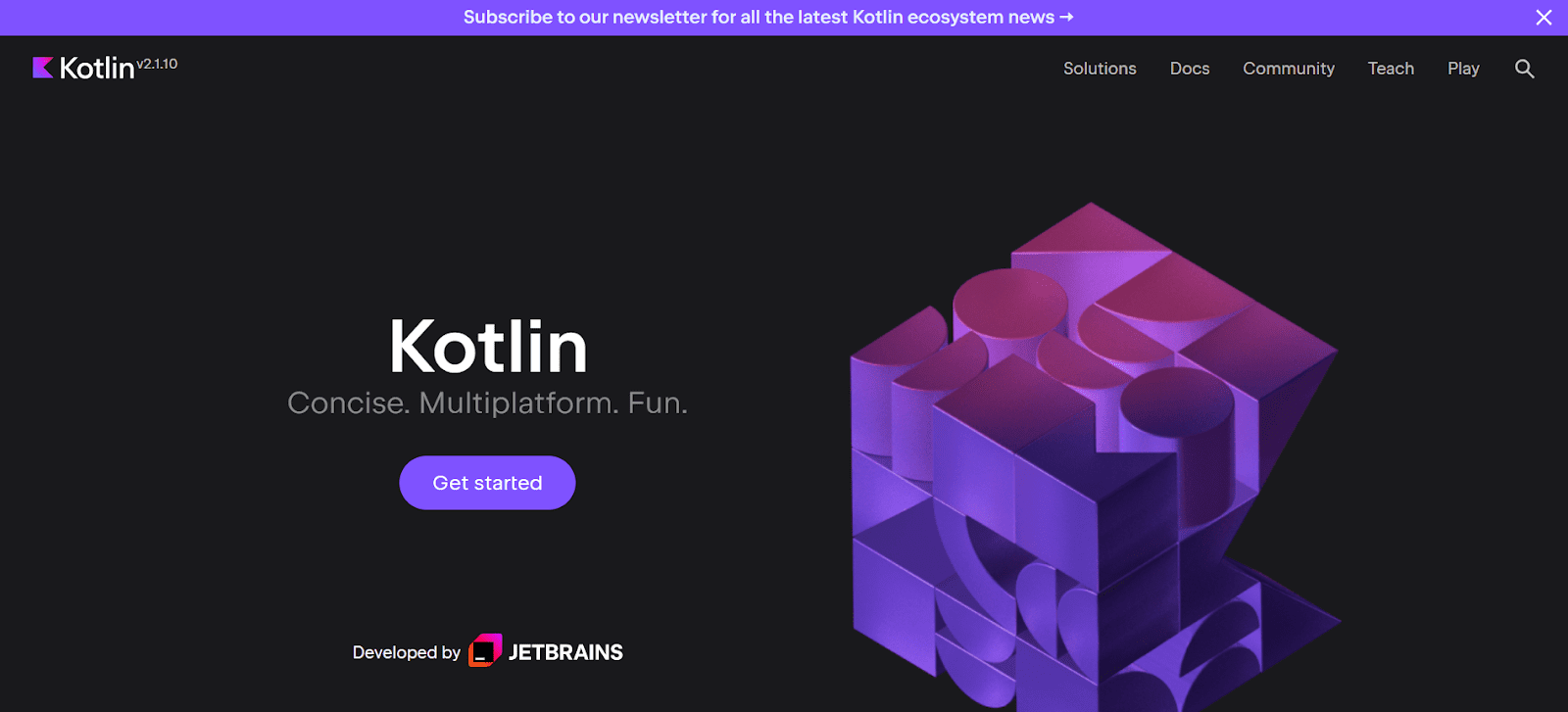
Kotlin is a modern and concise language developed by JetBrains and backed by Google. It has become a preferred choice for Android app development. Moreover, it focuses on the developer experience. Additionally, interoperability with Java makes it a powerful tool for building high-quality Android applications.
Its features include:
- Kotlin has a clean and readable code structure, hence, making it easier to learn and maintain.
- It prevents crashes by null pointer exceptions, hence leading to more robust applications.
- Kotlin code can integrate with Java codebases used in Android development.
| Pros | Cons |
| Kotlin offers high code maintainability. | Kotlin’s ecosystem of libraries is smaller compared to Java. |
| Extensive resources and support are available. | Java developers have to learn Kotlin’s syntax and features. |
| The preferred choice for Android development. | Not used outside of the Android ecosystem. |
Moreover, a Kotlin developer earns a yearly salary of $127,151. This comes out to $61/hour.
10. Ruby
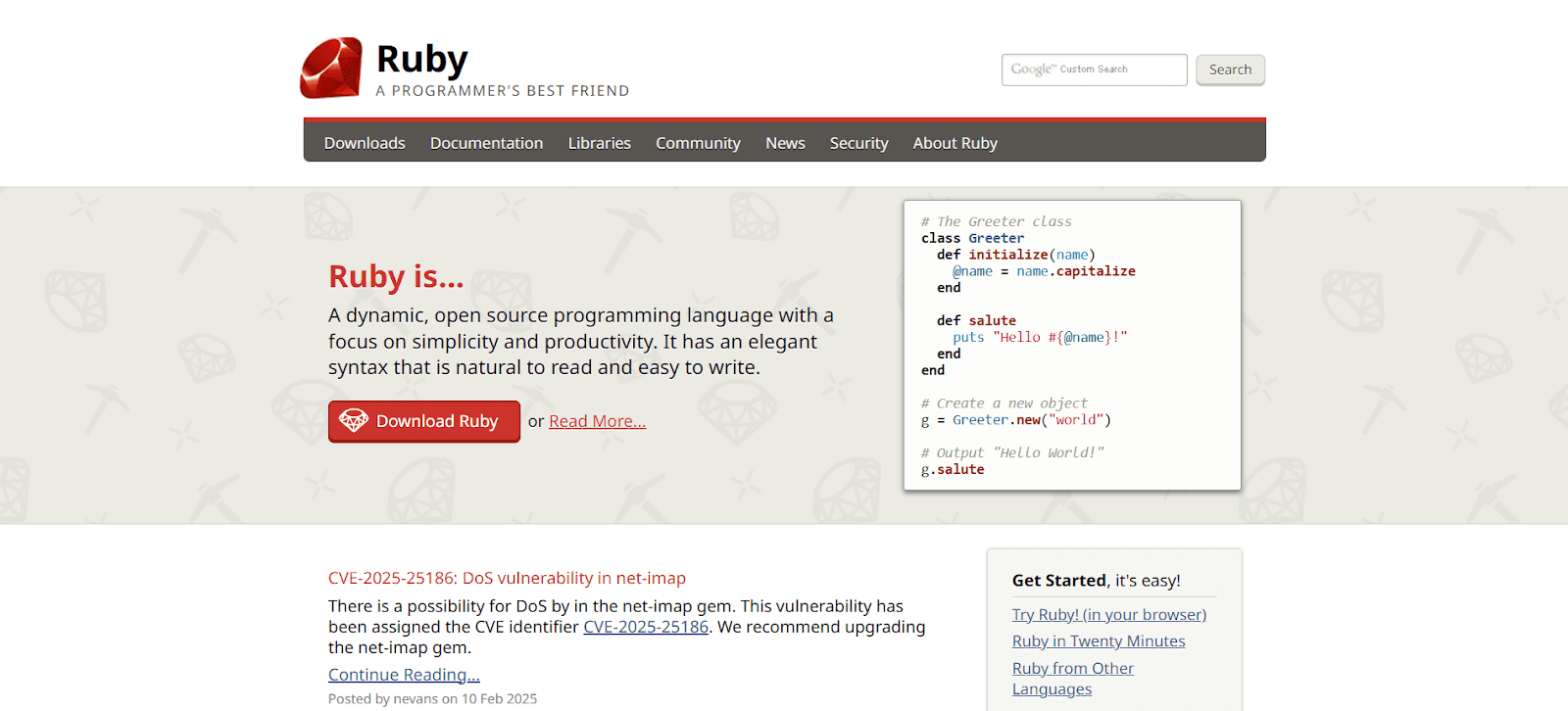
Ruby is a high-level programming language. Additionally, frameworks like Rails make it a popular choice for building web applications. Moreover, it also looks after developer productivity.
Its features include:
- Ruby code resembles natural language. Hence, it’s easy to read and understand.
- Additionally, it has features and libraries that streamline the development process.
- It integrates with Rails, a powerful web development framework with pre-built functionalities.
| Pros | Cons |
| Relatively simple to learn because of its clear and clear and concise syntax. | Ruby code executes slower compared to others. |
| Rails helps developers build features quickly. | It is only suited for web development. |
| Ruby has a large community of developers. | It has strict conventions that developers have to adapt to. |
The basic average salary of a Ruby developer is $134,186/year. This comes out to $65/hour.
11. Scala

Scala is another popular programming language. Furthermore, it has gained traction for building scalable and maintainable applications. Moreover, it also offers static typing making it a great choice for developing complex enterprise applications.
Scala has the following features:
- Scala’s development process catches errors early. Hence, this leads to reliable applications.
- It promotes clean codes, hence, improving maintainability for large projects.
| Pros | Cons |
| It’s suited for building enterprise-level applications that require long-term maintenance. | The blend of coding types and static typing can be challenging to learn compared to some languages. |
| Scala allows developers to write concise yet powerful code. | The job market for Scala developers is smaller. |
| It has a growing community and an ecosystem of libraries and frameworks. | Scala isn’t a great choice for new developers. |
A Scala developer earns $129,348 per year. This comes out to $62/ hour.
12. HTML
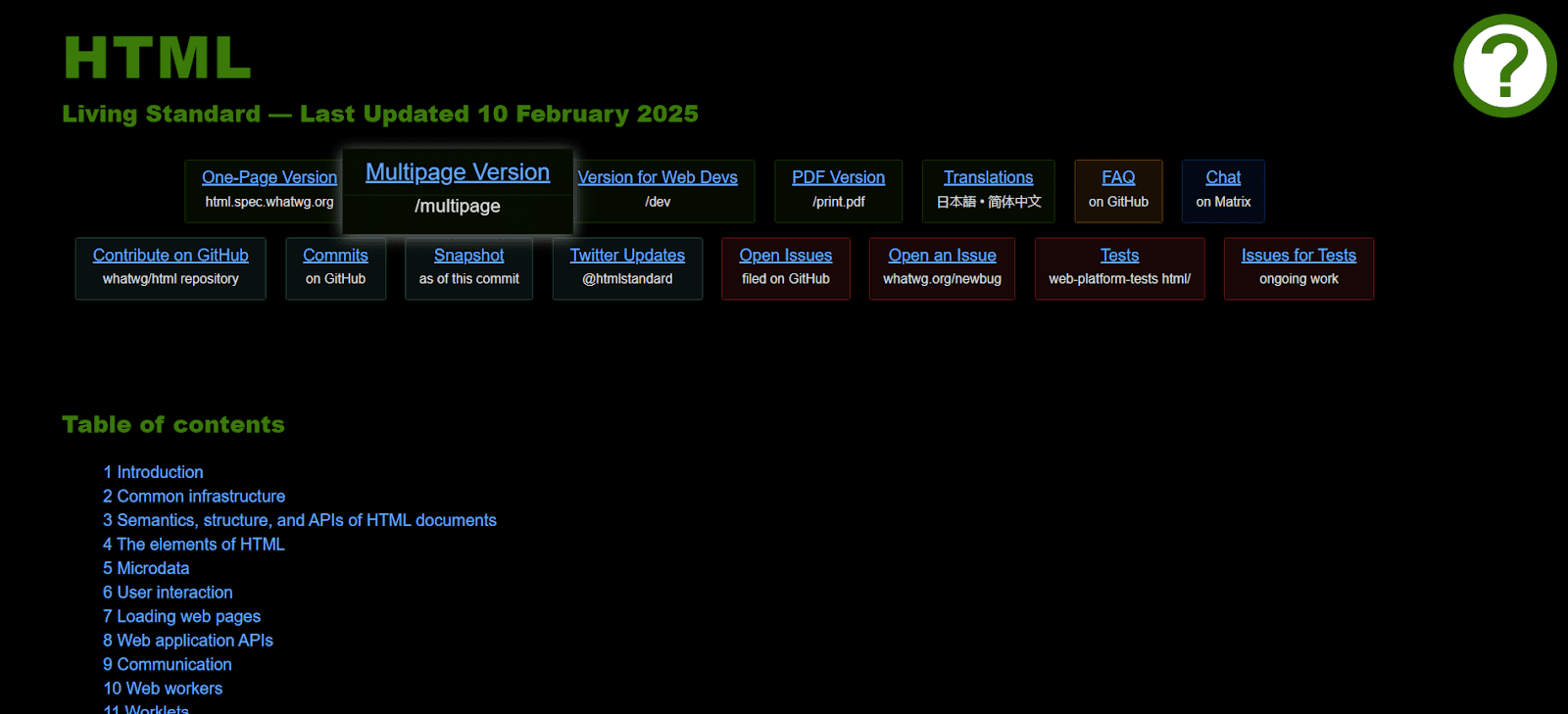
HTML isn’t quite a programming language. But it’s a foundational frame of every website. Furthermore, it defines the structure and content of a web page. Thus, it acts as a skeleton upon which all other web technologies rely.
Its features are:
- It helps in the creation of links that connect web pages. Moreover, it allows users to navigate the web.
- HTML has a simple and readable syntax.
- It defines the structure of a web page by using tags to identify headings, paragraphs, and other elements.
| Pros | Cons |
| HTML is necessary for web developers. | HTML only provides structure. For styling and interactivity, you need CSS and JavaScript. |
| It provides a way to define the structure of a webpage. | It is only limited to defining structure without advanced features for complex web applications. |
The salary of an HTML developer is $94,149 per year. This comes out to $45/hour.
13. CSS

While HTML structures the content, its CSS defines the visual presentation of the web page. It defines layouts and overall aesthetics. Additionally, with CSS you can control fonts, colors, backgrounds, and layouts to user-friendly and visually appealing web experiences.
Some of its features include:
- CSS provides style control options and various web page elements.
- It enables websites to adapt to different screen sizes.
| Pros | Cons |
| It helps create user-friendly interfaces. | CSS relies on HTML for structure and JavaScript for interactivity. |
| Because it’s beginner-friendly, it’s great for those with basic HTML knowledge. | It’s not technically a programming language but a stylesheet language. |
A front-end developer with expertise in CSS earns around $111,845 a year. This comes out to $54/hour.
14. NoSQL
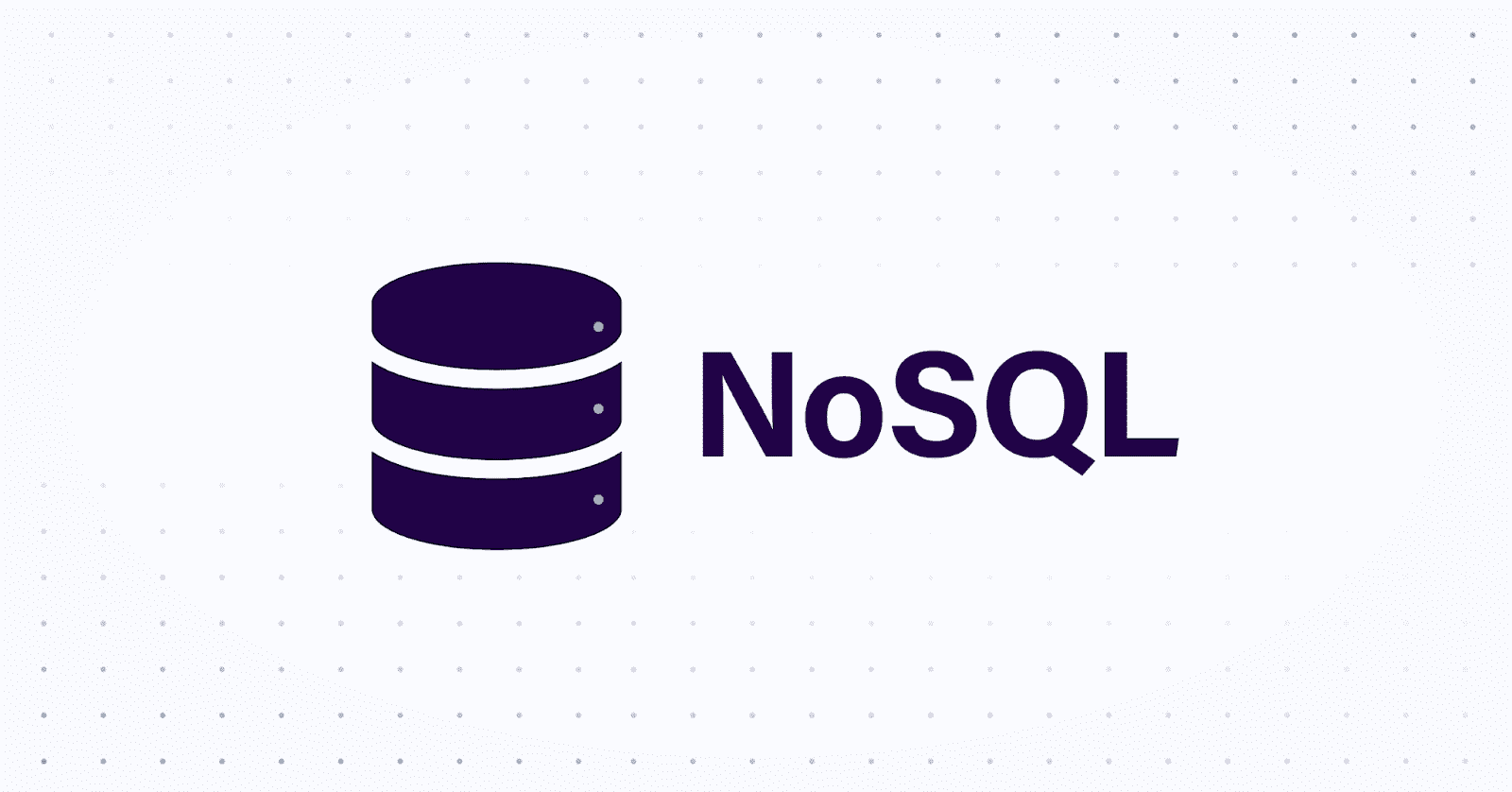
NoSQL is a category of non-relational databases. Moreover, it has transcended traditional databases because of its flexibility and scalability for modern web applications. Additionally, it’s designed for large and unstructured datasets.
Its features are:
- NoSQL can accommodate data with different structures.
- It processes massive datasets efficiently. Therefore, it’s ideal for big data applications.
- It offers faster read and write speeds.
| Pros | Cons |
| It’s perfect for storing and managing data that doesn’t fit into a relational table. | NoSQL isn’t ideal for complex data relationships modeled well by relational databases. |
| It scales efficiently for large datasets. | Querying a NoSQL database is complex. |
| A flexible schema allows for faster development cycles. | It doesn’t replace relational databases entirely. However, it offers a complimentary solution for specific needs. |
The average salary of a NoSQL developer is around $129,348/ year. This comes out to $62/hour.
- Rust

Rust is a great programming language for developing operating systems, virtual reality apps, and web browsers. Moreover, it can run multiple concurrencies. Hence, it’s a great choice when you need speed and efficiency.
Its features are:
- Rust enforces memory safety. Hence, all references point to valid memory.
- Rust is a multi-paradigm programming language. Hence, you can work in several programming styles.
| Pros | Cons |
| Its borrow checker ensures memory safety. | Rust also has a steep learning curve, especially for beginners. |
| Its ownership model makes concurrent programming manageable. | Longer compile times compared to others. |
A Rust developer earns around $109,905 per year. This comes out to $53/hour.
Conclusion
There you have it. We have listed down the best and the most popular programming languages for both beginners and experienced developers. Furthermore, most these programming languages are easier to learn; while some are a bit complex.

